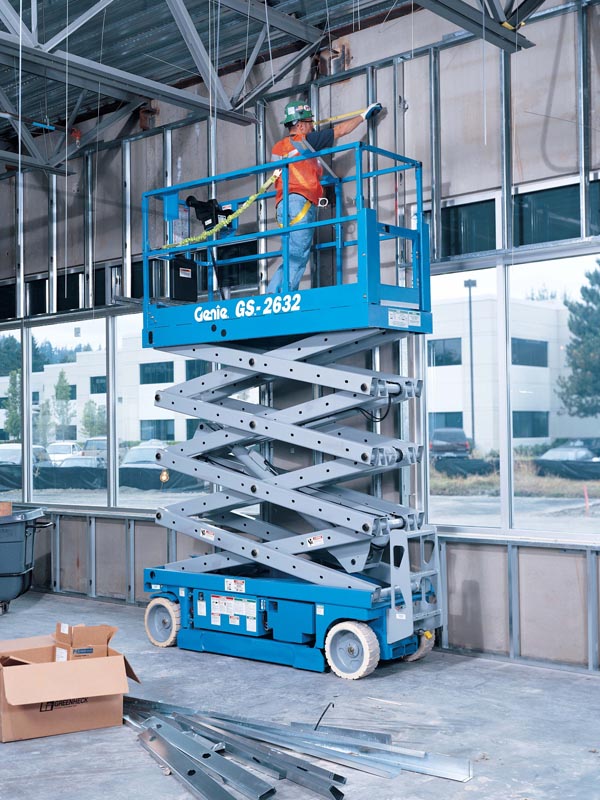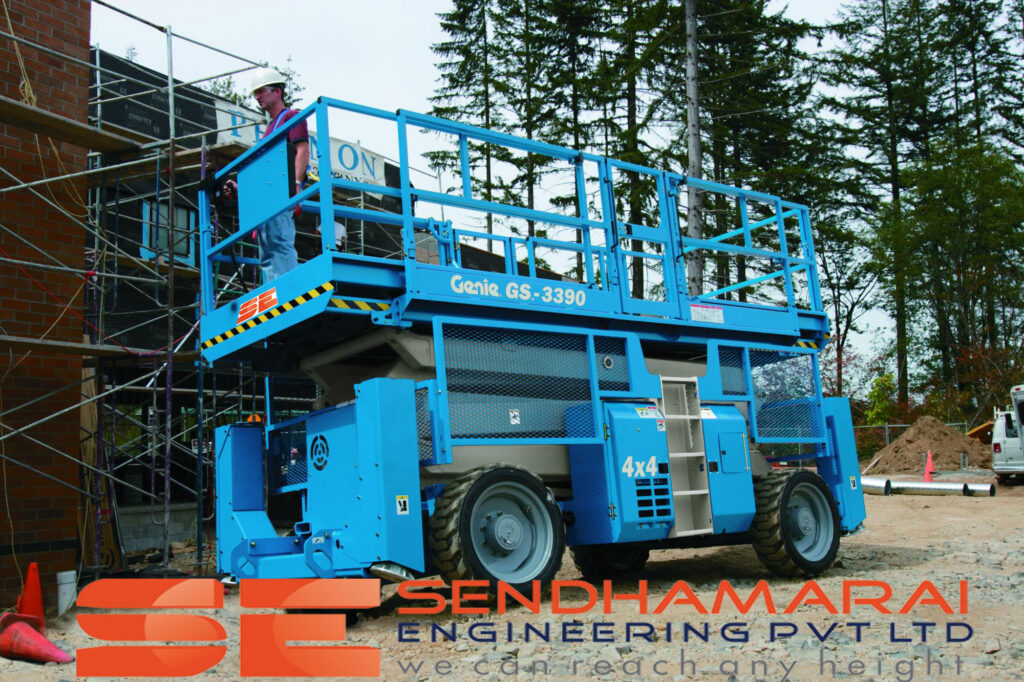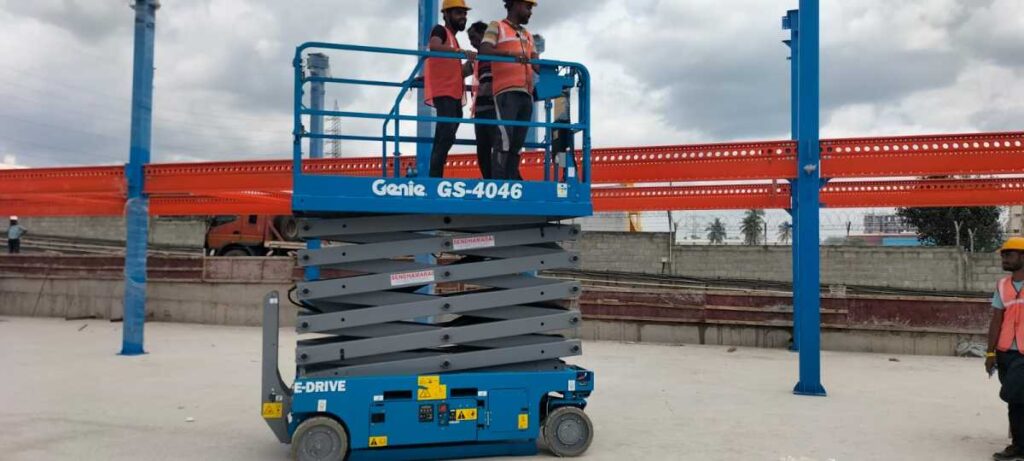In the fast-paced world of construction, maintenance, and events, access to elevated spaces is crucial. Hydraulic scissor lift rental emerges as a game-changer, providing a flexible and cost-effective solution for projects requiring vertical mobility.
Advantages Experience a paradigm shift in project efficiency with hydraulic scissor lift rentals. These lifts offer stability, easy maneuverability, and the ability to reach varying heights, enhancing both productivity and safety on the job.
Applications From construction sites to warehouse operations, hydraulic scissor lifts find diverse applications. Their versatility extends to tasks such as painting, maintenance, and installation, making them indispensable across various industries.
Choosing the Right Lift Selecting the appropriate hydraulic scissor lift involves considering factors like lift capacity, platform size, and power source. This section guides you through the decision-making process to ensure the lift aligns with your project’s specific requirements.

Safety Measures Prioritize safety when operating hydraulic scissor lifts. Explore essential safety measures to create a secure working environment, minimizing risks and enhancing the overall safety of your team.
Cost-Efficiency Unlock the potential for cost savings by opting for hydraulic scissor lift rentals over outright purchases. This section delves into the financial impact, illustrating how rentals can optimize project budgets without compromising on quality.
Maintenance Ensure optimal performance by understanding the maintenance requirements of rented hydraulic scissor lifts. Learn about service expectations and how to address issues promptly for uninterrupted workflow.
Key Features Demystify the technical specifications of hydraulic scissor lifts. Understanding key features such as lift capacity, platform size, and power source empowers you to make informed rental decisions.
Indoor vs. Outdoor Use Tailor your choice of hydraulic scissor lift to the specific environment. Whether indoors or outdoors, considerations such as terrain and weather conditions play a pivotal role in selecting the right equipment.
Rental Process Navigate the rental process seamlessly with this step-by-step guide. From choosing the right lift to finalizing paperwork, ensure a hassle-free experience when opting for hydraulic scissor lift rentals.
Operator Training While basic operation is user-friendly, it’s advisable to undergo proper training to ensure safety and competence. This section highlights the importance of training programs and their availability.
Testimonials Gain insights from real-world experiences with hydraulic lift rentals. Explore testimonials from businesses and individuals who have benefited from the flexibility and efficiency of scissor lift rentals.
Industry Trends Stay updated on the latest innovations and advancements in hydraulic scissor lift technology. This section explores emerging trends that may impact the future of lift rentals.
Environmental Impact Explore sustainable practices in hydraulic scissor lift rentals. As environmental consciousness grows, understanding the eco-friendly aspects of lift rentals becomes crucial for responsible project management.

The significance of hydraulic scissor lift rental
Renting hydraulic scissor lifts holds significant importance in various industries and project scenarios. These versatile lifting solutions offer a range of benefits, contributing to enhanced efficiency, safety, and overall project success. Here’s a closer look at why the hydraulic scissor lift rental is a game-changer:
1.provides a flexible approach to accessing elevated spaces. Projects often require different types and sizes of lifts, and rental options cater to these diverse needs. Whether you need a compact lift for indoor maintenance or a rugged, all-terrain lift for outdoor construction, renting allows you to adapt to specific project requirements seamlessly.
2. Cost-Effectiveness: Opting for hydraulic scissor lift rental proves cost-effective compared to purchasing. This is particularly beneficial for short-term projects or those with fluctuating demands for elevated access. By avoiding the upfront costs of ownership, businesses can allocate resources more efficiently, optimising their overall project budget.
3. Enhanced Productivity: Time is of the essence in most projects, and hydraulic scissor lifts contribute to increased productivity. Rental options provide quick access to state-of-the-art equipment without the delays associated with purchasing. This agility allows projects to progress smoothly, meeting deadlines and milestones with ease.
4. Safety Assurance: Safety is paramount in any construction or maintenance project. Hydraulic scissor lifts are designed with safety features such as stable platforms, guardrails, and emergency descent mechanisms. By opting for rental equipment, you ensure that you are using well-maintained, up-to-date lifts that comply with safety standards, reducing the risk of accidents.
5. Trial and Error: Renting hydraulic scissor lifts enables businesses to experiment with different models and configurations before committing to a purchase. This trial-and-error approach ensures that you select the most suitable lift for your specific needs, considering factors like lift capacity, platform size, and power source.
6. Reduced Maintenance Burden: Owning lifting equipment comes with the responsibility of maintenance and repairs. By choosing rental options, you transfer this burden to the rental provider. This not only saves you time and effort but also ensures that the equipment is well-maintained, reducing the chances of breakdowns during critical project phases.
7. Accessibility to Advanced Technology: The construction and industrial sectors continually witness technological advancements in lifting equipment. Opting for hydraulic scissor lift rental gives you access to the latest technological innovations without the need for frequent capital investments. This ensures that your projects benefit from state-of-the-art features and capabilities.
8. Environmental Considerations: In an era where sustainability is a growing concern, hydraulic scissor lift rental aligns with eco-friendly practices. Rental providers often invest in modern, energy-efficient equipment, contributing to a more sustainable and environmentally conscious approach to construction and maintenance projects.
Ensuring a secure working environment with scissor lift
Creating a secure working environment is paramount when utilizing scissor lifts for various projects. These versatile pieces of equipment, while enhancing efficiency and accessibility, require meticulous attention to safety measures to ensure the well-being of operators and those in the surrounding area. Here’s how you can guarantee a secure working environment when using scissor lifts:
1. Operator Training: Begin by ensuring that all operators undergo comprehensive training before using a scissor lift. Training programs should cover the fundamentals of operating the equipment, understanding safety features, and responding to emergency situations. Competent and knowledgeable operators are the first line of defense in maintaining a secure work environment.
2. Adherence to Safety Guidelines: Establish and strictly enforce safety guidelines for scissor lift operation. This includes proper use of personal protective equipment (PPE), adherence to weight capacity limits, and following recommended procedures for ascending, descending, and maneuvering the lift. Regular safety briefings and reminders contribute to a culture of safety on the worksite.
3. Regular Equipment Inspections: Maintain a routine schedule for inspecting and servicing scissor lifts. Regular checks should include examining the hydraulic system, ensuring proper functioning of controls, inspecting the platform and guardrails, and verifying the emergency descent system. Any issues or potential problems should be addressed promptly to prevent accidents.
4. Clear Communication Protocols: Establish clear communication protocols between scissor lift operators and ground personnel. Effective communication is crucial for safely navigating the lift, especially in busy construction sites. Utilize signaling methods such as radios or hand signals to convey instructions and warnings clearly.
5. Proper Ground Surface Assessment: Before deploying a scissor lift, assess the ground surface to ensure it can support the equipment’s weight and is level. Uneven or unstable surfaces can compromise the stability of the lift, posing a significant safety risk. Address any ground conditions that may affect the lift’s stability before operation.

6. Fall Protection Measures: Implement fall protection measures to safeguard workers on elevated platforms. This includes the use of guardrails, personal fall arrest systems, or other appropriate fall protection equipment. Emphasize the importance of securing tools and materials on the platform to prevent them from falling.
7. Emergency Response Plan: Develop a comprehensive emergency response plan specific to scissor lift operations. This plan should outline procedures for responding to accidents, malfunctions, or adverse weather conditions. All personnel involved should be familiar with the emergency protocols and be prepared to act swiftly in unforeseen situations.
8. Weather Considerations: Monitor and consider weather conditions before and during scissor lift operation. High winds, rain, or extreme temperatures can impact the stability and safety of the lift. Establish protocols for suspending operations during adverse weather conditions to prevent accidents and ensure worker safety.
By prioritizing these measures, project managers and site supervisors can create a secure working environment when utilizing scissor lifts. Safety awareness, thorough training, and proactive maintenance contribute to a culture of responsibility and well-being, ensuring that projects are completed efficiently and without compromising the health and safety of the workforce.
Battery Operated Hydraulic Scissor Lift Rental Price
In the ever-evolving landscape of construction and industrial projects, the choice of equipment plays a pivotal role in ensuring efficiency and cost-effectiveness. Among the plethora of options available, battery-operated hydraulic scissor lifts stand out as versatile solutions that combine the benefits of mobility, ease of use, and environmental consciousness. In this comprehensive guide, we delve into the intricate details of battery-operated hydraulic scissor lift rental prices, demystifying the factors that influence costs and providing insights to empower your decision-making process.

Understanding the Technology: Battery Operated Hydraulic Scissor Lifts
Before delving into the nuances of pricing, it’s crucial to comprehend the technology that makes battery-operated hydraulic scissor lifts a sought-after choice. These lifts integrate the convenience of battery-powered operation with the robust functionality of hydraulic systems. The result is a quiet, emission-free lifting solution that excels in indoor and outdoor applications.
Factors Influencing Battery Operated Hydraulic Scissor Lift Rental Prices
1. Lift Capacity and Size
The primary determinant of rental prices is the lift’s capacity and platform size. Larger lifts with higher weight capacities generally command higher rental fees due to their ability to handle more significant tasks and accommodate larger work teams.
2. Reach Height
The vertical reach capability of a scissor lift is a key pricing factor. The greater the reach height, the more versatile the lift becomes for accessing elevated work areas. Expect an incremental increase in rental prices for lifts with extended reach capabilities.
3. Duration of Rental
The rental duration directly impacts the overall cost. Short-term rentals for specific projects may have a different pricing structure compared to long-term rentals spanning weeks or months. It’s essential to align the rental duration with your project timeline for optimal cost-effectiveness.
4. Indoor vs. Outdoor Use
Battery-operated hydraulic scissor lifts are designed to cater to various environments. Rentals for indoor use may have different pricing considerations than those intended for outdoor projects. Understanding your project’s specific requirements helps in choosing the most cost-effective option.
5. Maintenance and Condition of the Lift
Well-maintained lifts in optimal condition often command higher rental fees. However, the assurance of reliability and reduced downtime justifies the investment. Ensure clarity on the maintenance practices of the rental provider to make an informed decision.


